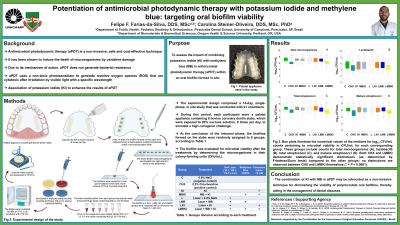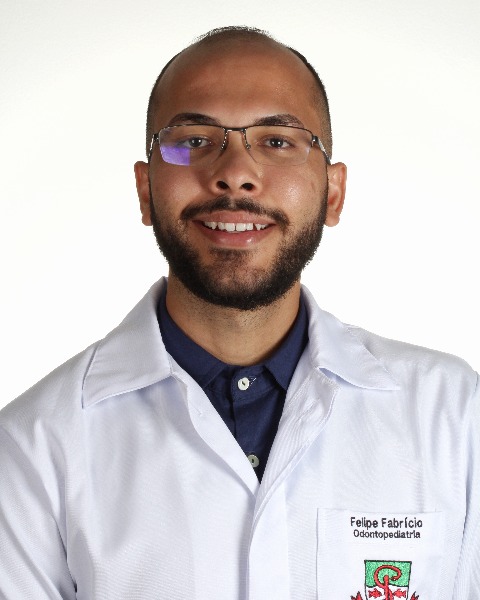Caries
313 - Potentiation of antimicrobial photodynamic therapy with potassium iodide and methylene blue: targeting oral biofilm viability


Felipe Fabricio Farias-da-Silva, DDS, MSc (he/him/his)
PhD Candidate
Piracicaba Dental School, University of Campinas, Brazil
Portland, Oregon, United States- CS
Carolina Steiner-Oliveira, DDS, MSc, PhD
Piracicaba Dental School, University of Campinas
Piracicaba, Sao Paulo, Brazil
Presenting Author(s)
Program Director(s)
Purpose: The study aimed to assess the impact of combining potassium iodide (KI) with methylene blue (MB) in antimicrobial photodynamic therapy (aPDT) within an oral biofilm formed in situ.
Methods: A single-phase, 14 days in situ study involved 21 volunteers, each one used a palatal appliance with 8 bovine dentin slabs. These slabs were exposed to a 20% sucrose solution 8 times a day, simulating a high cariogenic challenge. Following the intraoral phase, the biofilms formed on the slabs were randomly assigned to the treatments: C (0.9% NaCl); CHX (0.2% chlorhexidine); KI (75 mM KI); MBKI (0.005% MB + 75 mM KI); L (0.9% NaCl + red laser 660 nm, 18J, 180 s); LMB (0.005% MB + laser); LKI (75 mM KI + laser); LMBKI (0.005% MB + 75 mM KI + laser). The treated biofilms were collected, diluted, and incubated to assess cell viability (CFU/mL) for total microorganisms, total lactobacilli, total streptococci, and mutans streptococci. Data were subjected to analysis using the Friedman test, followed by the Dunn test (α = 0.05).
Results: LMBKI group exhibited a noteworthy decrease in the viability of all microorganisms in comparison to groups C, KI, MBKI, MB, L, LMB, and LKI (P < .0001), and demonstrated a comparable reduction to the CHX group (P >.99).
Conclusion: The combination of KI with MB in aPDT may be advocated as a non-invasive technique for diminishing the viability of polymicrobial oral biofilms, thereby aiding in the management of dental diseases.
Identify Supporting Agency and Grant Number: Research supported by Coordination for the Improvement of Higher Education Personnel (CAPES) - Brasil.

.jpg)